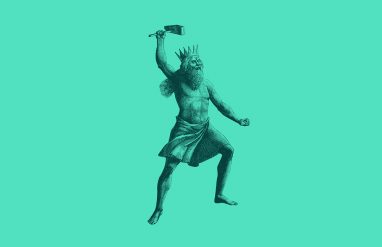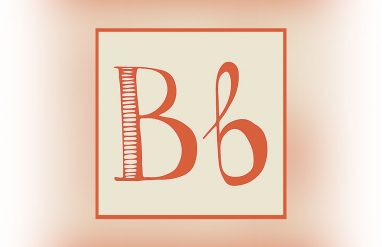There is quite a bit of mystery surrounding the letter A. From its prestigious first place position to its interesting shape, tracing the first letter of the English alphabet uncovers a history that begins with, of all things, an ox.
Where does the letter A come from?
The letter A is derived from the Phoenician letter aleph—a western Semitic word referring to the aforementioned beast of burden. Aleph can be traced back to the Middle Bronze Age and the Proto-Sinaitic script found in parts of Egypt and Canaan from around 1850 BCE (Before the Common Era). The character comes from an ancient Egyptian hieroglyph or pictogram depicting an ox’s head. Interestingly, the original image was reminiscent of the modern letter K. The letter originally served as a glottal stop (a stop consonant) in the Phoenician language such as a t or p in the middle of a word.
Some linguists believe the aleph was placed at the beginning of the Phoenician alphabet to honor the ox, important for its muscle power and as a food source. However this theory has been contested. As David Sacks puts it in his history of the alphabet, Letter Perfect, “How and why aleph was chosen for first place, we will never know.”
WATCH: Common Words That Originated From The Animal Kingdom
From aleph to alpha
During the 8th century BCE, the ancient Greeks formed their own alphabet primarily based on the Phoenician alphabet. Since the Greeks had little use for a glottal stop, the aleph was used to denote the vowel a which was re-named alpha, possessing the phoneme a as in father. The Greeks revised the former k-like character by turning it upright – similar to the modern day capital, or majuscule, letter A. The Romans adopted the Greek alphabet by way of the Etruscans. Like the Etruscans before them, the Romans kept the character and phoneme intact; thus the Modern English vowel A was born.
The most used letters in the alphabet
A is the third most commonly used letter in the English alphabet (the letter e is in first place, followed closely by the letter t). The letter A likes to multitask, possessing three distinct phonemes: The æ, also referred to as a near-open front un-rounded vowel, denotes the a sound in apple and cat, the open-back un-rounded vowel, or a:, denotes the long a sound heard in father and March, and the ā, an orthographic vowel, exhibits the ei sound heard in the words made and fade.














